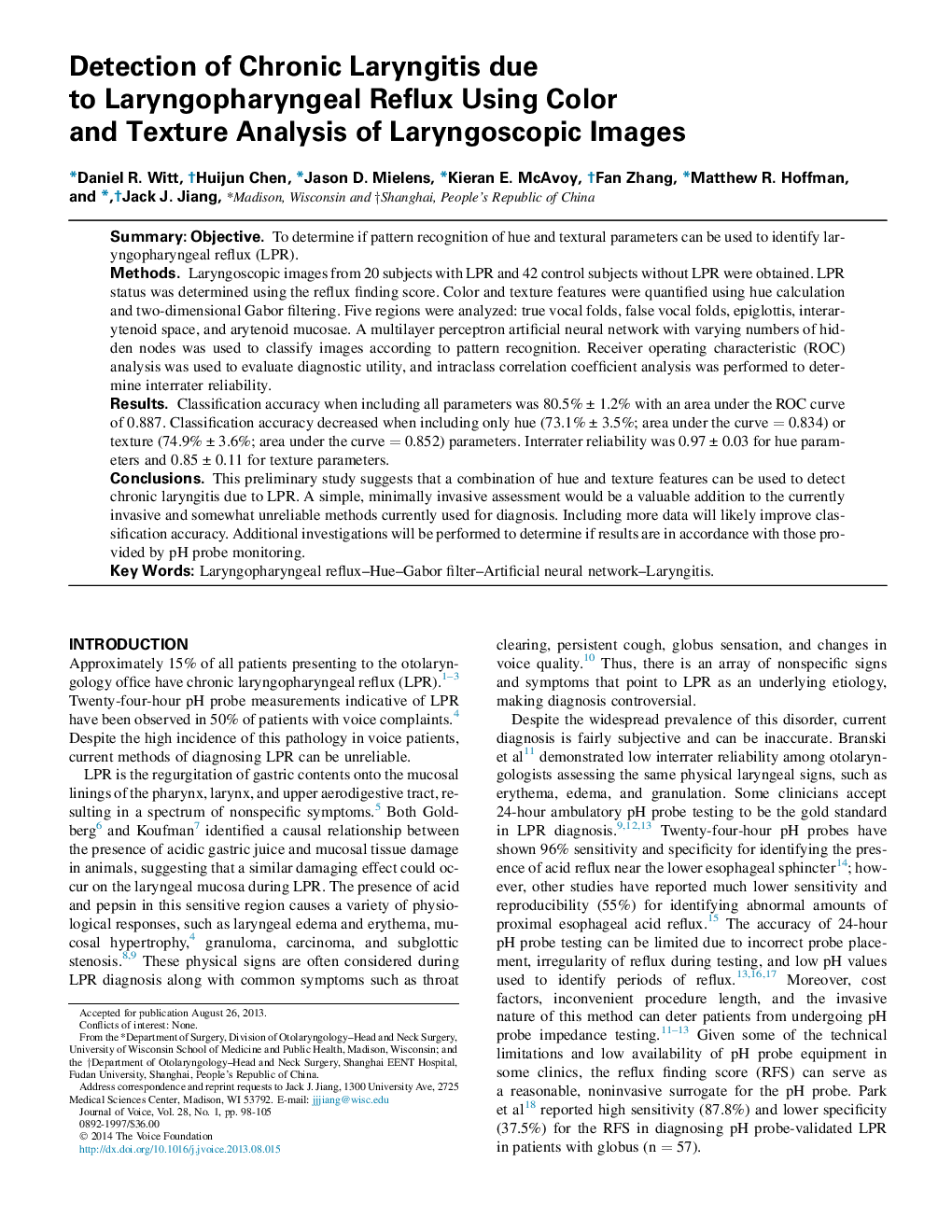| Article ID | Journal | Published Year | Pages | File Type |
|---|---|---|---|---|
| 1101995 | Journal of Voice | 2014 | 8 Pages |
SummaryObjectiveTo determine if pattern recognition of hue and textural parameters can be used to identify laryngopharyngeal reflux (LPR).MethodsLaryngoscopic images from 20 subjects with LPR and 42 control subjects without LPR were obtained. LPR status was determined using the reflux finding score. Color and texture features were quantified using hue calculation and two-dimensional Gabor filtering. Five regions were analyzed: true vocal folds, false vocal folds, epiglottis, interarytenoid space, and arytenoid mucosae. A multilayer perceptron artificial neural network with varying numbers of hidden nodes was used to classify images according to pattern recognition. Receiver operating characteristic (ROC) analysis was used to evaluate diagnostic utility, and intraclass correlation coefficient analysis was performed to determine interrater reliability.ResultsClassification accuracy when including all parameters was 80.5% ± 1.2% with an area under the ROC curve of 0.887. Classification accuracy decreased when including only hue (73.1% ± 3.5%; area under the curve = 0.834) or texture (74.9% ± 3.6%; area under the curve = 0.852) parameters. Interrater reliability was 0.97 ± 0.03 for hue parameters and 0.85 ± 0.11 for texture parameters.ConclusionsThis preliminary study suggests that a combination of hue and texture features can be used to detect chronic laryngitis due to LPR. A simple, minimally invasive assessment would be a valuable addition to the currently invasive and somewhat unreliable methods currently used for diagnosis. Including more data will likely improve classification accuracy. Additional investigations will be performed to determine if results are in accordance with those provided by pH probe monitoring.
